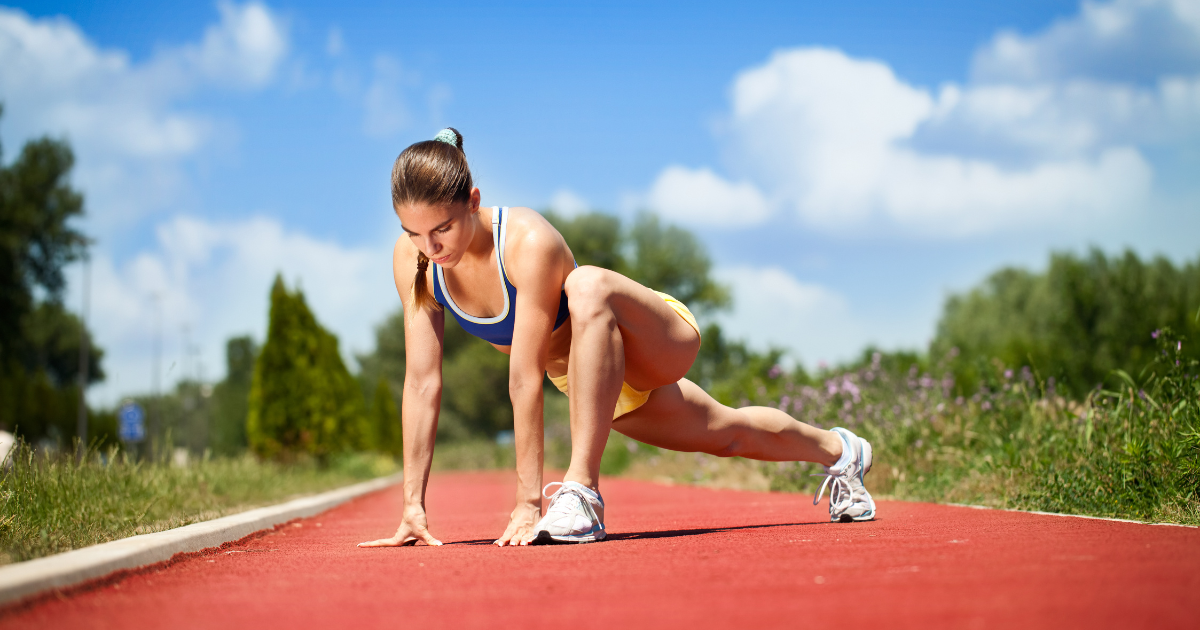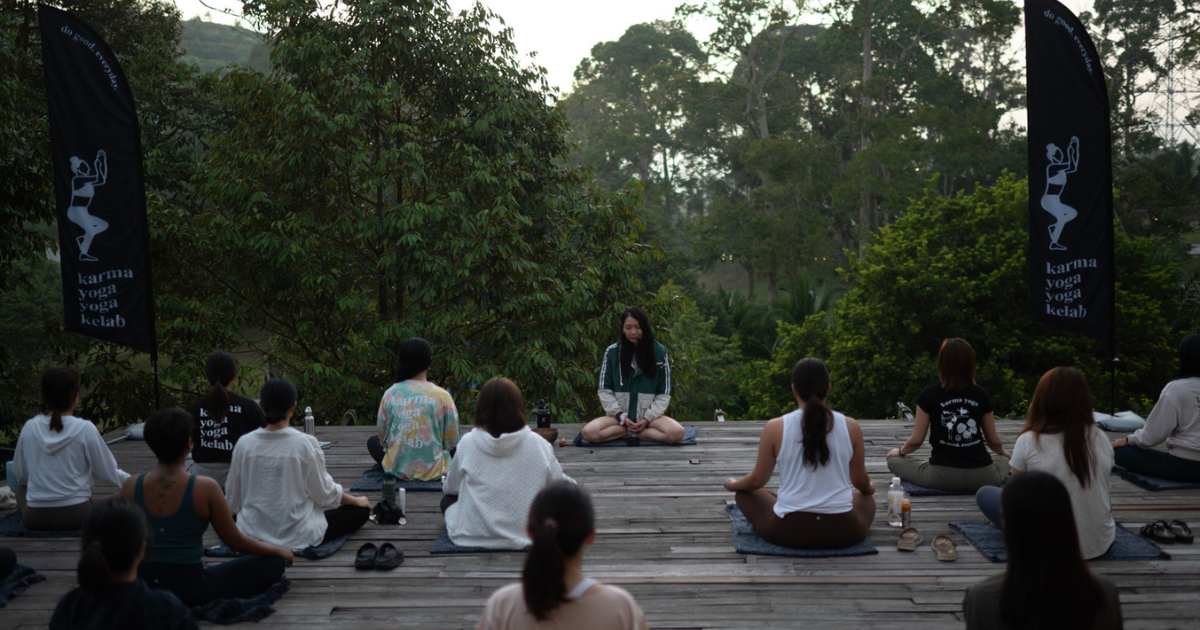As a runner, you always look for ways to enhance your performance and speed up your recovery. You heard that yoga might help, but is that true?
Incorporating yoga into your routine can be a game-changer. It not only improves your flexibility, balance, and strength but also helps in mental focus, allowing you to push through tough runs with ease.
In this article, we will discuss the benefits of yoga for runners and suggest yoga poses you can start practicing to improve your running performance and recovery.
Is yoga good for runners?
The short answer: Yes!
Yoga is incredibly beneficial for runners. It offers a unique combination of stretching, strengthening, and balancing exercises that specifically target the muscles most used and often overworked by runners. Yoga can help to alleviate tightness, improve range of motion, and decrease the risk of injuries, making it an excellent addition to any runner's training regimen.
Moreover, yoga's focus on breath work and mindfulness can enhance mental clarity and focus, essential components for endurance sports. Regular practice helps foster a deeper connection between mind and body, enabling runners to stay centered and calm during challenging runs.
The benefits of yoga for runners
Increase flexibility. The dynamic stretching involved in yoga poses helps increase flexibility, particularly in the hamstrings, hip flexors, and calves, which can enhance stride length and reduce stiffness post-run.
Strengthen the core, quads, and glutes. Yoga isn’t just about stretching, it is also a great practice to improve the strengths of targeted muscle groups. A strong core stabilizes your torso during runs, reducing wobbling and ensuring efficient energy transfer between the upper and lower body. Stronger quads and glutes support your knees, minimizing the risk of common running injuries.
Improve balance and coordination. The balance and coordination learned through yoga poses translate directly to better running technique, leading to more efficient, injury-free running. Balance poses challenge your stability, teaching your body to maintain control even on uneven terrain.
Practice better breathing. Breathwork is a primary part of yoga. The breath control practiced in yoga improves oxygen efficiency. Learning to breathe deeply and evenly can help you manage your energy better during long runs, preventing fatigue and enhancing endurance.
Yoga poses for runners
Specific yoga poses are particularly beneficial for runners, targeting areas prone to tightness or injury. Incorporating these poses into your routine can help improve flexibility, strengthen muscles, and enhance recovery.
1. Downward dog pose

Downward dog is a fundamental pose in yoga practice. Also known as Adho Mukha Svanasana, it provides a deep stretch to the spine, calves, and hamstrings, improving flexibility.
How to do it: Begin on your hands and knees, then lift your hips up and back, creating an inverted V shape with your body. Press your heels towards the ground and hold for 10 breaths.
Getting it right: Properly aligning your hands and knees is crucial for maximizing the stretch and avoiding strain. This position also helps strengthen your arms and shoulders, providing a full-body workout that benefits runners.
2. Low lunges

Low lunges, or Anjaneyasana in Sanskrit, are excellent for improving ankle mobility and stretching the hip flexors, which often become tight from long periods of running. This pose helps to open up the hips and improve flexibility, contributing to a smoother running stride.
How to do it: From a standing position, step one foot forward into a lunge, lowering your back knee to the ground. Sweep your arms overhead, deepening the stretch, and hold for several breaths.
Getting it right: To prevent injury, focus on keeping your hips square and your front knee directly over your ankle. Sweeping your arms overhead not only adds a gentle backbend to the stretch but also engages the core and enhances balance.
3. Garland pose

Garland pose, or Malasana, focuses on ankle mobility and opens the hips, making it especially beneficial for runners. Although this pose can be challenging at first, it's incredibly effective in improving the squatting motion, a fundamental movement pattern that supports running efficiency and injury prevention.
How to do it: Start by squatting with your feet as close together as possible. Then, press your elbows against your inner knees, joining your palms together in front of your chest. Hold this position to deepen the stretch in your ankles, groins, and back, enhancing flexibility and range of motion.
4. Pigeon pose

Pigeon pose targets the hip flexors, thighs, and glutes, areas that can become particularly tight in runners. This pose stretches deep into the hip muscles, reducing the risk of injuries like plantar fasciitis.
How to do it: Starting on your hands and knees, bring one knee forward towards your hand, aiming to get your shin parallel to the front of your yoga mat. Extend the other leg behind you, keeping your hips square.
Getting it right: By ensuring your thighs are parallel and maintaining a squared hip alignment, you maximize the stretch's benefits, promoting recovery and flexibility in the lower body.
5. Supine Spinal Twist

Supine Spinal twists, or Supta Matsyendrasana, are vital for releasing tension in the spine, promoting flexibility, and aiding in digestion. This pose helps loosen the back muscles, which is essential for a smooth, efficient running posture. Regular practice of spinal twists can significantly improve spinal health and flexibility, contributing to overall well-being and enhanced recovery for runners.
How to do it: Lying on your back, bring one knee towards your chest and then gently cross it over your body, extending your arms out to the sides. Hold this position for 10 breaths, allowing gravity to deepen the stretch.
How to fit yoga into your running routine
Integrating yoga into your running routine might seem challenging at first, but it's simpler than you think. Start by dedicating just 10 minutes of your day to yoga. This short time can be in the morning to awaken your body or in the evening to help you unwind.
The key is consistency. Even a brief session can significantly reduce muscle soreness and enhance flexibility, making your running experience smoother.
On your rest days from running, consider doing a longer yoga session. This helps maintain the balance between strengthening and stretching, crucial for a runner’s recovery. You don’t need to attend an hour-long class; a 20 to 30-minute session at home can be highly beneficial.
Utilizing tools such as a yoga block can help make poses more accessible and effective, especially if you're new to yoga or recovering from an injury. A yoga block can help modify poses to suit your flexibility level, ensuring that you gain the maximum benefit without straining yourself. This makes yoga an inclusive practice for runners of all levels.
Give yoga a try today
Fitting yoga and running into your schedule requires some planning, but it’s definitely achievable. Try alternating running days with yoga sessions, or do a short yoga practice as a warm-up or cool-down on your running days.
Listening to your body is crucial; yoga should feel like a nurturing practice, not another task on your to-do list. With time, you’ll find the balance that works best for you, enhancing both your yoga and running experiences.





